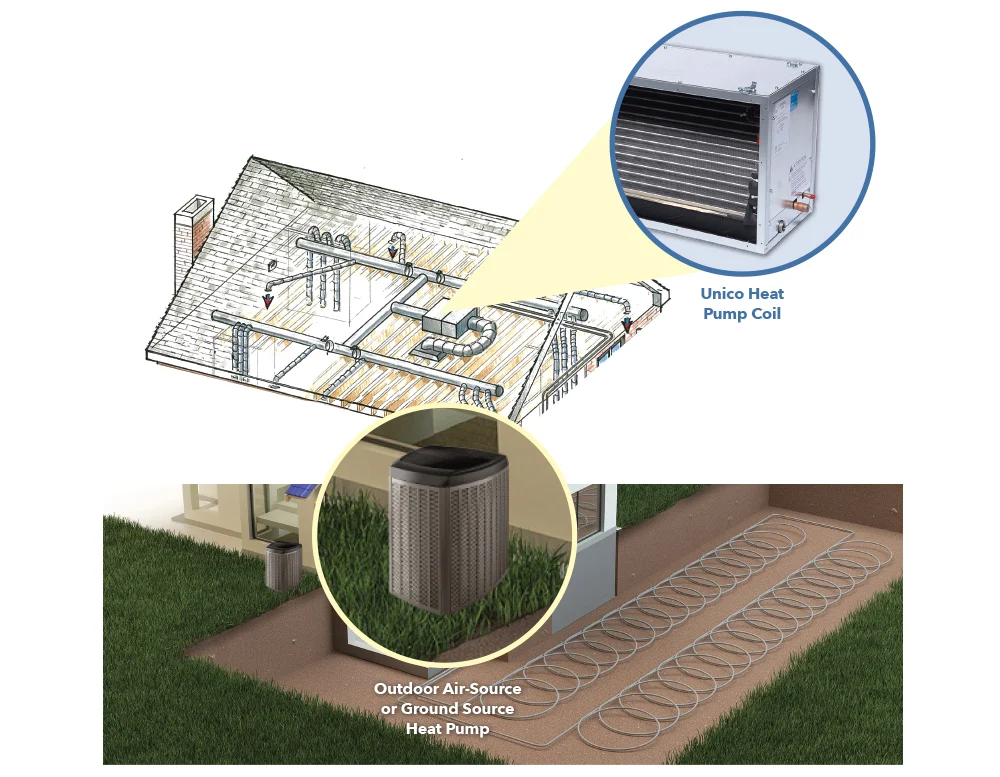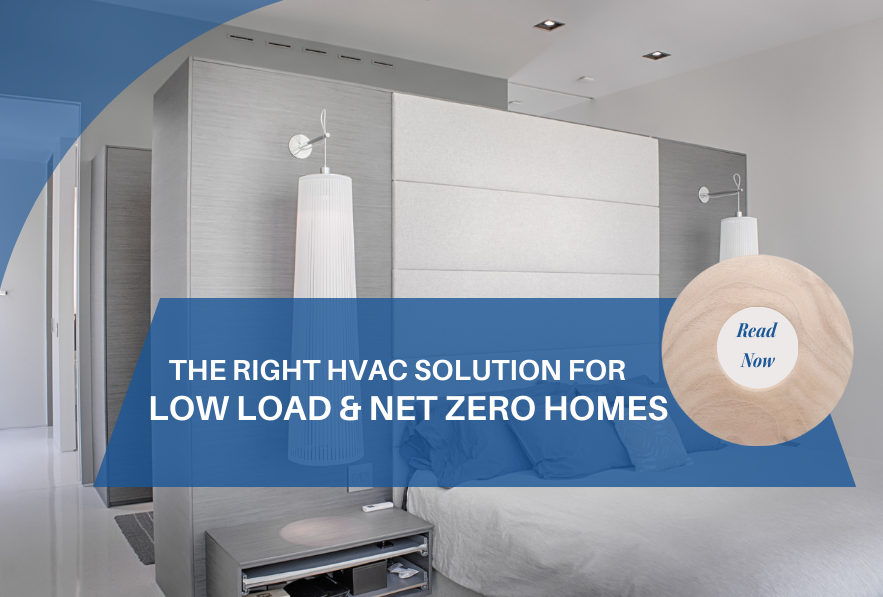How Does a Heat Pump Work?
July 18, 2023

Heat pumps are a hot topic these days when it comes to home heating and cooling. If you’re considering a renovation or new custom home, you might be wondering, how does a heat pump work? We’re here to help with the basics of heat pumps and to shed light on the physics behind them.
Why Use a Heat Pump?
One of the biggest advantages of a heat pump is that one system works for both heating and cooling. Simply put, heat pumps move heat from one space to another, depending on where it’s needed. So, in the transition between seasons when temperatures can fluctuate, the system will automatically shift between heating and cooling to maintain a perfectly comfortable temperature, without the need to worry about whether to fire up the furnace.
How Does a Heat Pump Work as an Air Conditioner?
Modern air conditioners have always worked through the concept of moving heat from one place to another. A component known as a condenser contains liquid refrigerant that absorbs heat energy inside the home. The refrigerant is moved through the system to the outdoor portion of the air conditioning unit, where the hot air is discharged.
Here’s a breakdown on the physics of how a heat pump works to keep you comfortable.
1. The evaporator coil contains a refrigerant liquid, which is very cold and easily absorbs heat. The unit uses a fan that blows the indoor air over the coil and heat is absorbed by the refrigerant. The resulting cool air is circulated into the home.
2. The refrigerant is then pressurized, and the pressurized heat causes the liquid to become a gas.
3. The hot gas moves through the system to an outdoor unit.
4. The compressed gas is hotter than the surrounding environment, even in the summer. So when the gas enters the condenser coils in the outdoor unit, heat is released into the outside air.
5. The refrigerant becomes cooler and turns back into a liquid.
6. The refrigerant is circulated back to the indoor unit, where an expansion valve reduces the pressure and allows the refrigerant to cool enough that it’s ready to absorb more heat.
Why Does a Heat Pump Work All Year?
Heat naturally wants to move to a place with less heat. The refrigerant has a freezing point lower than 32° F, making the refrigerant so cold that it still absorbs warmth from the surrounding air. In regions with mild winters, a heat pump is all you need to stay warm and comfortable all year long.
How Does a Heat Pump Work with a Furnace?
Heat pumps use electricity rather than burning fossil fuels, making heat pumps more energy efficient than a furnace or boiler during the spring and fall. However, when the temperature reaches below freezing, a heat pump requires more energy to collect the heat energy from outside, and it becomes more efficient to use a furnace.
A system with a heat pump will automatically switch between the furnace and the heat pump when it becomes more efficient. In colder climates, homeowners save money with this type of dual system through lower energy bills.
How Would a Heat Pump Work in Your Home?
Unsure how a heat pump would work where you live? A Unico Preferred Contractor can create a custom heating and cooling system design for your home and determine what you’ll need to make it operate most efficiently. Find your local contractor to schedule a free quote.
Need Help With Your Next Project?
Have a historic retrofit or a custom home project? Unico offers FREE Design Services for all of your upcoming projects.
Contact UsRelated Resources
You May Also Like
-

August 15, 2024
Discover Training Opportunities at Unico, Inc.
-

June 27, 2024
The Right HVAC Solution for Low-Load and Net Zero Homes
-

We'd love to hear from you
Do you have a project worth sharing in a Unico case study or a topic that would be perfect for The Outlet blog? We'd love to hear your thoughts and suggestions.
Submit a Case Study